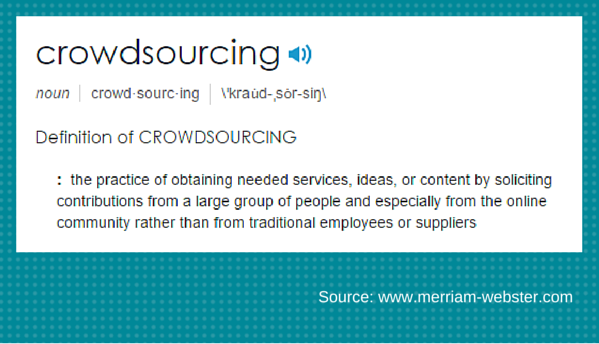
Much like the handsome gentleman in the photo above, I am a multitasker. So, while working on a June-themed small business client eNewsletter last week, I made a couple of notes and tapped into a few resources for this post on summer email marketing. Themed email marketing is a no-brainer, but effective themed email marketing requires a bit more thought, knowledge of email best practices and a dose of creative inspiration. And, you guessed it, oh baby did I come up with hot tips and sizzling inspiration to maximize your email marketing momentum this season.
Thought
To introduce the monthly specials eNewsletter for the LGK client, a local beauty salon, the process of creating a focus and subject line took a few research and brainstorming hours. This process included a review of demographics, client (buyer) personas, along with emotional, cultural and local marketing triggers, which led us to the altar – a matrimonial approach, if you will. Here’s the subject line and first couple of sentences from the opening paragraph:
To: Jane Doe
From: XYZ Salon, Palm Beach
Subject: Say Yes to XYZ Salon’s June Specials
Dear Jane,
Who says you have to be a bride or groom to make a commitment in June? At XYZ Salon, love is in the hair!
Schools are out, and summer is in, so now is the perfect time to say yes to a month of great savings for your vacations, staycations and special celebrations.
Within 24 hours of distribution to 500 clients, there were 200 website page views of June specials, 47 appointments booked for the upcoming week and a strong, “blissful”, indication that this themed email campaign is on track to exceed its revenue goal.
In the article, 50 Summer Subject Lines + Tips to Write Sunny Subject Lines, content marketing blogger Lisa Furgison provides summer-themed subject lines from retailers, service-based businesses, and nonprofits – a list sure to jumpstart ideas for your summer-themed emails. She also explains how best to use common summer words, summer-themed song titles or classic summer movie references in your subject line. Read Furgison’s article at verticalresponse.com.
Email Marketing Best Practices
Here are a few tips from two email service providers we periodically use for client email marketing.

The best email subject lines are short, descriptive and provide the reader with a reason to explore your message further. Splashy or cheesy phrases more often cause your email to be ignored rather than make them stand out.
Email marketers are familiar with words such as “free,” which should be avoided since it triggers spam filters. We identified innocuous words that won’t trigger a spam filter, but will negatively affect your open rates. They are: Help, Percent off, and Reminder.
Personalization, such as including a recipient’s first name or last name, didn’t significantly improve open rates. Providing localization however, such as including a city name, did improve open rates.
…you should keep your subject line to 50 characters or fewer. One exception stood out. For campaigns whose subscribers were highly targeted, the readers seemed to appreciate the additional information in the subject line.
The “From:” information can be as important as the subject line. As a best practice, the “From:” and subject line should work together. Use the “From:” line to indicate and make clear who you are as the sender.
Think about what you would like if you were the recipient. …When it comes to subject lines, don’t sell what’s inside. Tell what’s inside.
Read the entire article, Best Practices for Email Subject Lines, at MailChimp.com.

There are best practices when it comes to the subject line of a company’s email marketing campaign — these include avoiding all caps, as well as exclamation points or other unnatural symbols.
…The subject in an email campaign is not always the first thing recipients look at. It’s often times the “from” line that actually gets a reader’s attention. It’s been indicated that subject lines come in third place, behind knowing and trusting the sender and having previously opened an email from that sender, as reasons for receiving a click.
This points to the fact that trust in an email sender carries more weight than the subject line itself. As an email marketer, you need to create a good first impression with new subscribers in order to facilitate a high level of trust from the start.
What’s more, emails should always contain something of value …
…it’s also been said that a deceptive subject lines can still act as a deterrent to subscribers. The bad taste left in the recipients’ mouth may be enough for them to click the “unsubscribe” button.
Read the entire article, Trust Trumps Subject Lines, at Campaigner.com.
Creative Inspiration
Oh, baby, I always have fun with this one. In fact, when developing email marketing subject lines or blog titles, I often visit these sites to get the juices flowing.
The Portent Content Idea Generator is a nifty tool for titles.

Give this tool a try – you won’t be disappointed!
For the purposes of this blog post, I entered the phrase: Summer Email Topics. Here are a few of the many suggestions returned.
- 20 Least Favorite Summer Email Topics
- Why Summer Email Topics are the Best Things Since Sliced Bread
- Summer Email Topics in 8 Easy Steps
- You Haven’t Seen This Summer Email Topics List on Buzzfeed
- Why Summer Email Topics are the Secret Ingredient
- 18 Things About Summer Email Topics Your Kids Don’t Want You to Know
- Why Summer Email Topics Beat Peanut Butter on Pancakes
- Doing Summer Email Topics the Right Way
Try the Portent Content Idea Generator at http://www.portent.com/tools/title-maker
The HubSpot Topic Generator is another staple of my creative diet.

Who needs Mad Men’s Don Draper, when there’s HubSpot?
Using the same phrase, Summer Email Topics, here are HubSpot’s suggestions:
- How to Solve the Biggest Problems With Summer Email Topics
- The Ultimate Cheat Sheet on Summer Email Topics
- The Worst Advice We’ve Ever Heard About Summer Email Topics
- 5 Tools Everyone in the Summer Email Topics Industry Should Be Using
- What Will Summer Email Topics Be Like in 100 Years?
Try HubSpot’s Topic Generator at this link.
So what’s heating up your email marketing this summer? Feel free to share your thoughts and suggestions in the comments section of this post.
GB O’Brien
LGK Principal
For daily marketing communications news, subscribe to LGK’s free, online, MarCom Digest.
Title graphic photo credit: bengrey / Foter / CC BY-SA

















